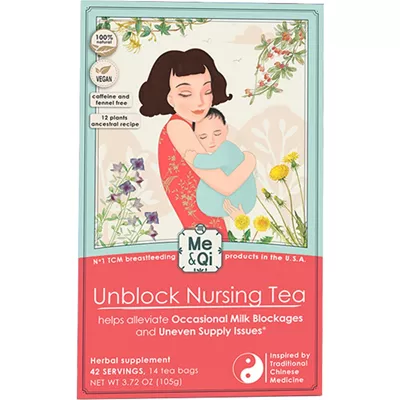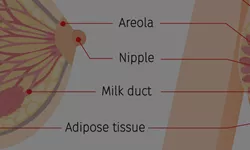This post is part of our complete guide on treating engorgement and clogged ducts. Refer back to the guide if you want a complete list of topics covered, from prevention to diagnosis and treatment. If you're specifically interested in what you can do to prevent engorgement or clogged ducts, please read on!
How do you prevent engorgement or clogged ducts?
A good analogy for understanding the issue is to view your breasts as pipes and your breast milk as water that flows in those pipes. The size of your “pipes” need to get adjusted to the flow: if the flow increases faster than your pipes there will be too much pressure on them and you’ll end up with engorged breasts or plugged ducts. Same thing if you don’t empty your pipes by breastfeeding: the flow will keep accumulating and the increased pressure will make your breasts engorged.
These are the reasons why engorged breasts and clogged ducts tend to occur at the start of your breastfeeding: your body increases the flow to your breasts while your “pipes” haven’t adjusted their size yet. It’s also why many women encounter engorged breasts or plugged ducts when they change breastfeeding rhythm: for instance if you miss a couple of breastfeeding sessions, your body still sends the flow to your breasts but by not emptying them the accumulated pressure leads to engorgement or plugged ducts.

The key to preventing engorgement is to therefore establish a steady breastfeeding rhythm as early as possible. As soon as your little one is born, you should breastfeed them often and on-demand (typically every 2 to 3 hours for a newborn) and keep at it from day one. You can feed them on both breasts every time or alternate breasts between feedings: both techniques are fine but once you choose one, keep doing it the same way so your body learns to adapt. Also, it goes without saying, make sure your baby latches properly and gets fed until they’re full and satisfied. Sometimes mothers are getting engorged simply because they thought their breasts were getting emptied when in fact their baby wasn’t getting much milk at all! If you do all this, you might still be slightly engorged in the first couple of weeks since your “pipes” might not be large enough yet but your body will rapidly adapt and you’ll avoid bigger engorgement issues.
Afterwards if you want to change your breastfeeding schedule, do so progressively to let your body adapt to the new rhythm. If for instance you wish to wean your baby from night feedings, transform 3 nightly breastfeeding sessions into 2 for a couple of days, then into 1 for another couple of days and then finally into zero.
So to summarize, how do you prevent engorgement or clogged ducts?
- Establish a steady breastfeeding schedule from day one and keep at it religiously
- Ensure your baby is latched properly so they get the milk they need and your breasts are emptied
- If you want to change your breastfeeding schedule, do so step by step to let your body adapt
- If your little one cannot breastfeed for a few sessions, pump instead to respect your schedule.
> Back to our complete guide on engorgement and clogged ducts
Article tags: Breastfeeding and maternity










